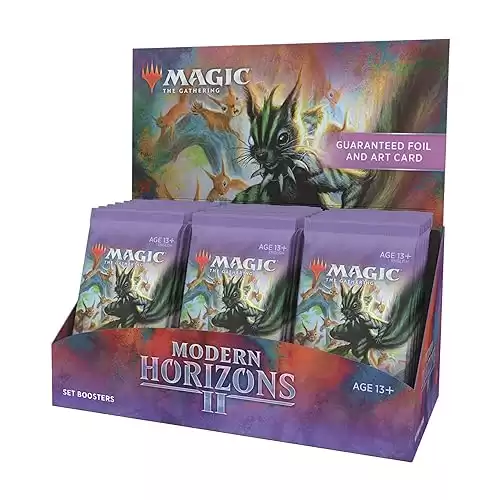MTG Modern is the most popular non-Commander format in Magic: the Gathering. Modern is a non-rotating format that comprises many decks and strategies. From its inception in August of 2011 at Pro Tour Philadelphia, Modern exists as one of the best ways to play Magic: the Gathering.
MTG Modern is a constructed format. Decks must contain a minimum of sixty cards with a fifteen-card sideboard. Modern is a non-rotating format. This means that once a set becomes legal in Modern it will not leave the format.
Modern also has a curated ban list of cards. Modern is comprised of every Standard-legal set from Eight Edition onwards. It also includes two specialty sets, Modern Horizons and Modern Horizons II. Modern is a diverse format with many different styles of decks. It is widely regarded as Magic’s most popular non-Commander constructed format.
While the format is a bit daunting, given all of the legal sets and cards on its ban list, don’t worry! With this handy guide you’ll be on your way to becoming a Modern master in no time!
Table Of Contents:
- What is Modern in MTG?
- What Sets are Legal in MTG Modern?
- How Popular is MTG Modern?
- Where Can I Play MTG Modern?
- What Products Should I Buy if I’m Interested in Modern?
- How Is Modern Different From Other Formats?
- What Cards Banned in MTG Modern?
- What Are The Positives and Negatives Of MTG Modern?
- Modern Deck Archetypes
- What is the MTG Modern Metagame?
- End Step
What is Modern in MTG?
MTG Modern is a constructed format. Decks must contain a minimum of sixty cards with a fifteen-card sideboard. Modern is a non-rotating format. This means that once a set becomes legal in Modern it will not leave the format. Modern also has a curated ban list of cards.
What Sets are Legal in MTG Modern?
With the release of Kamigawa Neon Dynasty this February, Modern will have 75 legal Magic: the Gathering expansions in the format. The oldest legal set in Modern is Eighth Edition (2003). All Standard expansions become Modern legal upon release. Modern also has seen the printing of special sets that are exclusive to Eternal Magic formats, such as Modern Horizons and Modern Horizons II.
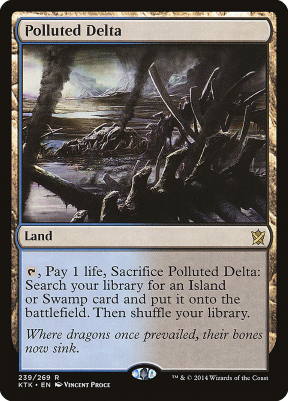
How Popular is MTG Modern?
Modern is arguably Magic’s most popular tournament format. Prior to the Covid pandemic, large Grand Prix events would sometimes have up to 2,500 players in a given Modern main event. Modern is played everywhere from the local game store level to large online and in-person competitions.
MTG Las Vegas, which was held in November of 2021 featured a Modern main event of over 1,000 players. No matter what area you’re from, if there’s a local game store near you you’ll be sure to find players with Modern decks.
Due to the fact that Modern doesn’t rotate the format changes at a much slower pace than rotating formats such as Standard or Alchemy. Players will usually gravitate to a specific strategy in Modern and build a deck based on the archetype.
For example, Modern Boros (Red-White) Burn has been a competitive-viable deck for the last seven or so years of the format.
RELATED: MTG Alchemy: An Ultimate Guide
Where Can I Play MTG Modern?
There are various options to choose from if you’re interested in playing MTG Modern. It’s important to note that Modern does not exist on MTG Arena. Due to the number of sets in the format and intricate card interactions, it is unlikely that Modern will ever be featured on the client.
However, Modern is a popular format on Magic’s other digital client, Magic Online. On Magic Online you can play in various events, the most popular Modern event being the weekly Modern Challenge. Modern Challenges feature top-level players competing for large prize pools.
Magic Online Modern deck lists can be found here.
Modern is also very popular in paper. If you’re looking to get experience in the format I’d recommend checking out your local game store. Modern is the favorite format of many players, and most game stores run casual and sometimes competitive events at least once a week, depending on the location.
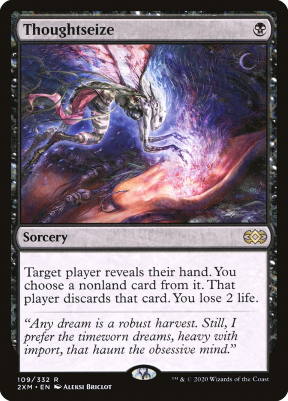
To see if any stores in your area offer Modern, check out this online tool.
Modern is also one of Magic’s premier competitive formats. Prior to the pandemic, Modern was featured as one of the main formats of the Magic: the Gathering Pro Tour. In 2022, there are multiple high-stakes events that offer Modern as the featured format.
Earlier this year it was announced that popular tournament organizer Star City Games will run large events called “SCG Con” once a month for the duration of 2022. SCG Con Philadelphia, which takes place February 11-13th, features two Modern main events, each with a $10,000 prize pool. Modern has proven to be a popular format at both the casual and competitive level.
What Products Should I Buy if I’m Interested in Modern?
While there aren’t many Modern-specific products, there are ways you can go about getting into the format. Modern Horizons and Modern Horizons II are both sets that include many Modern staples. Both sets were designed to include Modern-specific cards, so if you’re looking to crack booster packs to acquire a collection that’s where you should start.
Otherwise, when building a Modern deck it’s difficult to find the cards you want in specific booster packs. This is due to the fact that decks in Modern include cards from multiple sets spanning the last two decades. It is much better to buy the specific cards you need for a deck from your local game store or an online retailer.
How Is Modern Different From Other Formats?
Unlike Standard and Alchemy, Modern is a non-rotating format. This means that no sets leave the Modern format. As soon as expansions are legal in Standard, they become legal in Modern as well. Modern is a bit different from Pioneer, another non-rotating format, in that Modern has special sets directly printed into it.
With the release of Modern Horizons in 2019 and Modern Horizons II in 2021, Modern gained various new cards designed specifically for the format. Additionally, the Modern Horizons sets allowed reprints of cards not legal in Modern, but legal in Legacy and Commander.
What Cards Banned in MTG Modern?
Currently 45 cards are banned in the Modern format. While this seems like a lot, there are various reasons why so many cards are on the banlist. One issue that Modern faces is that as more new cards are printed it is more likely that new oppressive strategies will be discovered.

Take Mycosynth Lattice for example. Mycosynth Lattice was released in the set Darksteel, back in 2004. Lattice was legal for almost nine years in Modern, but was banned on January 13th, 2020. The reason? Its interaction with Karn, the Great Creator.
Karn has a static ability which states that activated abilities of artifacts your opponent’s control can’t be activated. With Lattice in play, it meant that your opponents could no longer tap their lands for mana, while you were able to still cast your own spells. Karn’s -2 loyalty ability also allowed you to easily grab Lattice from your sideboard.
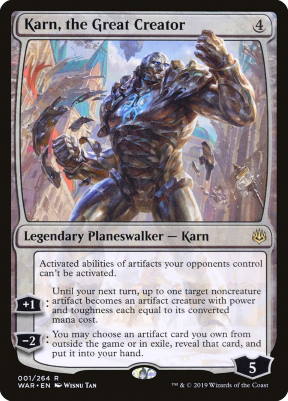
It was too difficult for players to interact with this two-card combo, so Lattice was banned. While this card was fine in the format for many years, all it took was one new card to make it incredibly oppressive.
Here is a consolidated list of the banned cards in MTG Modern:
- Ancient Den
- Arcum’s Astrolabe
- Birthing Pod
- Blazing Shoal
- Bridge From Below
- Chrome Mox
- Cloudpost
- Dark Depths
- Deathrite Shaman
- Dig Through Time
- Dread Return
- Eye of Ugin
- Faithless Looting
- Field of the Dead
- Gitaxian Probe
- Glimpse of Nature
- Golgari Grave-Troll
- Great Furnace
- Green Sun’s Zenith
- Hogaak, Arisen Necropolis
- Hypergenesis
- Krark-Clan Ironworks
- Mental Misstep
- Mox Opal
- Mycosynth Lattice
- Mystic Sanctuary
- Oko, Thief of Crowns
- Once Upon a Time
- Ponder
- Preordain
- Punishing Fire
- Rite of Flame
- Seat of the Synod
- Second Sunrise
- Seething Song
- Sensei’s Divining Top
- Simian Spirit Guide
- Skullclamp
- Splinter Twin
- Summer Bloom
- Tibalt’s Trickery
- Treasure Cruise
- Tree of Tales
- Umezawa’s Jitte
- Uro, Titan of Nature’s Wrath
- Vault of Whispers
Overall, Modern bans exist to keep the format in check. When decks become too dominant or hard to interact within a given metagame, bans are what keep the format healthy. While many cards have been banned in the Modern there are multiple cases where cards were unbanned as well.
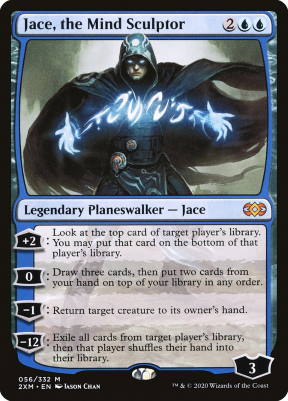
Two historic unbannings in the MTG Modern format were Jace, the Mindsculptor and Stoneforge Mystic. Both cards from the original Zendikar block, Jace and Stoneforge dominated the Standard format they were in.
Since Modern began around the time Jace and Stoneforge were released into Standard, they were banned right off the bat in Modern. However, as years went by both cards were eventually unbanned just a few years ago. Jace and Stoneforge both see play to this day.
These unbannings are due to the fact the format has introduced cards with much higher power levels.
What Are The Positives and Negatives Of MTG Modern?
There are a couple of key reasons that make Modern both a fantastic and controversial format to play.
Positives
Popularity: Modern is the most popular constructed Magic format, outside of Commander. This means that it’s easy to find players heavily invested in the format and find tournaments both online and in paper to play in. Multiple large in-person events this year feature Modern as the headlining format.
Deck Diversity: Modern is an incredibly diverse format and has been ever since its inception. No matter what type of player you are, it’s easy to find a deck that matches your playstyle. With the release of new expansions, there are constantly new decks making their way into the format while multiple decks have remained a part of the format for almost a decade.
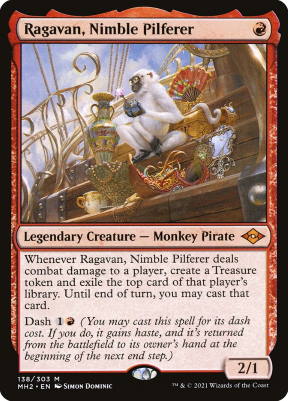
Negatives
The Cost: Modern is an incredibly expensive format depending on what deck you decide to build. One of the most popular decks in the format, Four-Color Yorion, boasts a price tag of almost $2500. Even decks that are cheaper, more aggressive options, such as Boros Burn will still cost a minimum of $600.
It’s extremely difficult to build multiple decks in the format due to the cost of entry. Usually, players will gravitate to one specific deck or archetype to build to reduce cost. This can be beneficial since it gives one more time to master a specific deck than multiple at a time.
Bannings: Another negative aspect of the format is how bannings affect the format. Over a dozen cards released in the last few years are banned. When a deck becomes too oppressive, it’s likely to receive a ban to balance out the format. This makes it sometimes difficult to invest in what the current “best deck” of the format is.
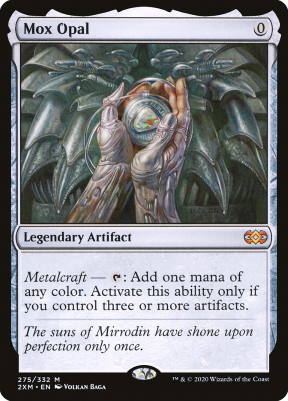
Take Mox Opal for example. Mox Opal was a card that made the backbone of the Affinity archetype, a deck revolving around various Artifact creatures.
However, with the printing of Urza, High Artificer in Modern Horizons in 2019, the combination of Urza and Opal was too powerful for the format. Thus, Opal was banned in 2020 and multiple Affinity players were unable to play their deck.
Supplemental Products: Going forward, Wizards of the Coast has announced that more supplemental products in addition to the Modern Horizons sets will make their way into Modern. Late last year Wizards introduced their brand “Universes Beyond,” which are dedicated sets that feature other intellectual properties.
Among the first few sets, Wizards announced was Lord of the Rings: Tales of Middle Earth. Tales of Middle Earth is a special product that is draftable. However, according to the release announcement, Tales of Middle Earth will be legal in the Modern format.
Whether you’re a fan of Lord of the Rings or not, many players take issue with the fact other intellectual properties are a part of competitive tournament formats. This is something to consider about Modern going forward. The chances of seeing more Universes Beyond sets printed into Modern is very likely.
Modern Deck Archetypes
If you’re planning on trying out MTG Modern it’s important to understand what the various deck archetypes are in the format. Modern is home to a swathe of different decks, ranging in multiple playstyles. Let’s take a look at the key archetypes of the format.
Midrange
Modern Midrange decks seek to use a combination of creatures and spells to out-grind the opponent. The deck can have both defensive and aggressive draws. Tarmogoyf has been a quintessential card to this archetype. Usually, Midrange decks use a combination of removal spells and cheap, powerful creatures to turn the tide in their favor.
For these decks, two-for-ones are the name of the game, and these decks seek to gain as much value as possible. Against Aggro decks they’re controlling. Against Control and Combo decks they tend to be more aggressive and disruptive. In the Midrange mirrors, they will try to amass as much value as possible to bury their opponent.
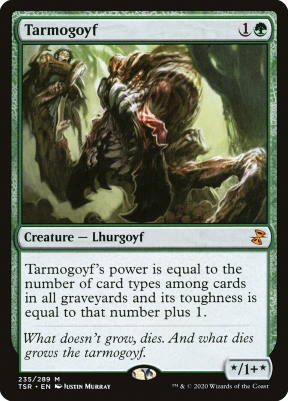
Examples of Midrange decks: Jund, Temur Rhinos, Four-Color Yorion
The takeaway: Midrange is solid across the
Ramp
Ramp decks come in different shapes and forms. These decks aim to advance their mana by putting multiple lands into play early. They typically have a top-end expensive spell that’s hard for their opponent to interact with.
Tron is one of Modern’s premier Ramp decks that has seen play since the format’s inception. Combining the power of Urza’s Mine, Urza’s Tower, and Urza’s Power Plant, Tron seeks to out-mana the opponent while putting in play exceptional threats such as Ulamog, the Ceaseless Hunger.
On the flip side Amulet Titan is another premier ramp strategy. The deck focuses on using Amulet of Vigor to put in lands that tap for two mana. The deck uses Primeval Titan to search for multiple strong land cards to defeat the opponent with.
Overall, Ramp decks tend to ignore the opponent’s game plan entirely and are more concerned with enacting their plan before their opponent can find meaningful interaction.
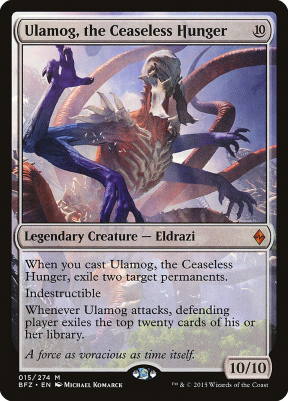
Examples of Ramp decks: Amulet Titan, Tron, Scapeshift
The takeaway: Ramp is good versus Midrange and Control decks, but can lose to enough disruption from the Control decks or a fast Aggro draw
Control
Control decks in Modern are pretty straightforward. A control deck seeks to disrupt the opponent’s game plan entirely, using cards like wrath effects and counterspells to take control of the
Control decks also use creatures in the form of “man-lands” or cards like Shark Typhoon to quickly turn the tide. Control decks are concerned primarily with disruption and eventually drawing more cards and lands than the opponent.

Examples of Control decks: Azorius Control, Esper Control
The takeaway: Control is great versus Midrange and has to draw its right answers to defeat Combo and Ramp. Control can be weak to aggressive Aggro draws.
Aggro
Aggro is a bit hard to define in MTG Modern. While many creature decks exist in the format some are more aggressive than others or use unique combinations of cards.
Take Boggles for example, the deck seeks to use powerful auras spells such as Daybreak Coronet with hexproof creatures like Slippery Bogle to swiftly defeat their opponent. While the deck only utilizes a few creatures in its build, its goal is still to turn creatures sideways and reduce the opponent’s life total from 20 to 0.

Burn is another Aggro deck that utilizes some creatures, but relies heavily on spells. Burn uses creatures such as Goblin Guide and Eidolon of the Great Revel to deal lots of early damage to an opponent.
The deck utilizes “burn” spells such as Lightning Bolt and Lava Spike to swiftly win the game. While the deck utilizes only twelve creatures, it’s still an Aggro deck due to the deck’s nature.
Examples of Aggro decks: Burn, Hammer Time, Prowess decks
The takeaway: Aggro is solid against Combo and Ramp decks, but is weaker to Midrange and Control decks depending on the answers they have access to
Combo
Somewhat similar to Ramp, combo decks use multiple cards in combination to defeat an opponent. Izzet Storm is known as one of Modern’s first Combo decks. Utilizing cards that added mana, such as Pyretic Ritual and Seething Song, the deck would aim to defeat an opponent with Past in Flames and Grapeshot.
The deck’s goal was to utilize the first couple of turns to fill its graveyard with multiple spells of this nature and then use Past in Flames and the mana spells to deal twenty points of damage with Grapeshot.
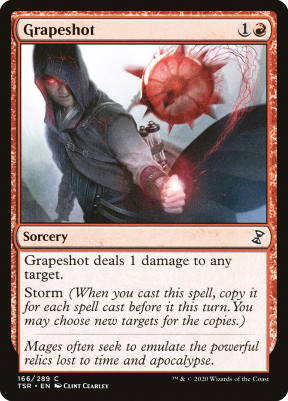
Combo decks don’t care about their opponent’s game plan. Their focus is to draw all of their combo pieces while avoiding disruption. Combo decks come in many different shapes and sizes, and Modern has seen a variety of Combo decks over the course of its history.
Examples of Combo decks: Izzet Storm, Belcher
The takeaway: Combo is good versus Ramp and Midrange, but can run into issues against Control and Aggro
What is the MTG Modern Metagame?
Looking at data from various popular Magic websites, such as MTGGoldfish and Magic Online decklists, it’s clear what decks are at the top of the current Modern metagame. As of February 15th 2022, the top eight most popular decks of the format are as follows:
- Grixis Death’s Shadow
- Four-Color Yorion
- Orzhov Hammer Time
- Izzet Murktide
- Boros Burn
- Jund Midrange
- Temur Rhinos
- Amulet Titan
It’s important to keep in mind that the Modern metagame is always changing. With new set releases, bannings/unbannings, and card popularity shifts, the meta can look entirely different in only a few weeks’ time. Let’s take a closer look at some of the more popular decks of the current metagame.
Grixis Death’s Shadow
| Companion (1) 1 Lurrus of the Dream-Den Creatures (14) 4 Death’s Shadow 4 Dragon’s Rage Channeler 2 Kroxa, Titan of Death’s Hunger 4 Ragavan, Nimble Pilferer Spells (27) 4 Expressive Iteration 2 Inquisition of Kozilek 4 Thoughtseize 3 Drown in the Loch 1 Kolaghan’s Command 4 Lightning Bolt 1 Spell Pierce 2 Unholy Heat 4 Mishra’s Bauble 2 Dress Down | Lands (19) 3 Blood Crypt 4 Bloodstained Mire 4 Polluted Delta 4 Scalding Tarn 2 Steam Vents 1 Swamp 1 Watery Grave Sideboard (15) 1 Dress Down 2 Kolaghan’s Command 1 Spell Pierce 1 Alpine Moon 2 Fatal Push 1 Lurrus of the Dream-Den 2 Nihil Spellbomb 1 Pyrite Spellbomb 2 Terminate 2 Tourach, Dread Cantor |
Grixis Death’s Shadow has been a staple of the Modern metagame for years. The deck is a midrange deck that seeks to deal damage to itself in order to power up its four copies of the card Death’s Shadow.
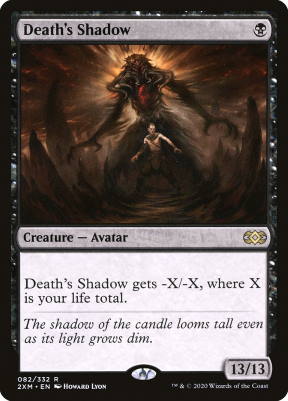
Using removal spells, countermagic, and other threats, the deck aims to get to an advantageous position where the opponent can no longer remove their potent threats. The deck is tricky to play since there are multiple resources to manage, primarily the life total.
Lurrus of the Dream-Den is the companion for this deck, easily allowing you to recast your Death’s Shadows and cards like Dragon’s Rage Channeler and Mishra’s Bauble late in the game. With its variety of threats, strong companion, and effective disruption it’s no wonder the deck is so popular and successful in the current metagame.
Four-Color Yorion
Four-Color Yorion is another immensely popular deck in the current Modern metagame. The deck is incredibly resilient, with lots of cards that can snowball in value such as Omnath, Locus of Creation.

Utilizing Teferi, Time Raveler and Yorion, Sky Nomad the deck seeks to gain tremendous value off of permanents with strong enter the battlefield effects. The deck also has multiple forms of disruption in the form of removal spells and counterspells.
Additionally, Spreading Seas is a great blink target for Yorion and Teferi that also can keep your opponent off of a certain color of mana they need. Overall, the deck is known for generating lots of value and can outmatch many decks in the long game.
Boros Burn
| Companion (1) 1 Lurrus of the Dream-Den Creatures (12) 4 Eidolon of the Great Revel 4 Goblin Guide 4 Monastery Swiftspear Spells (28) 4 Lava Spike 4 Rift Bolt 4 Skewer the Critics 4 Boros Charm 4 Lightning Bolt 2 Lightning Helix 4 Searing Blaze 2 Skullcrack | Lands (20) 2 Arid Mesa 2 Bloodstained Mire 1 Fiery Islet 4 Inspiring Vantage 3 Mountain 2 Sacred Foundry 4 Sunbaked Canyon 2 Wooded Foothills Sideboard (15) 3 Deflecting Palm 1 Lurrus of the Dream-Den 2 Path to Exile 3 Roiling Vortex 2 Sanctifier en-Vec 4 Smash to Smithereens |
Boros Burn is another pillar of the Modern metagame. For years, the deck has remained unchanged, only adding new burn spells if they cost one mana for three damage. Boros Burn is an interesting deck for a number of reasons. While it can be viewed as an aggro deck, in some ways it’s a combo deck as well.
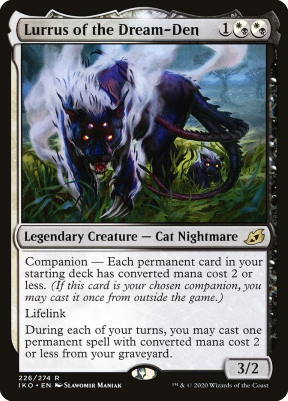
The deck can have very fast starts, sometimes casting multiple creatures early that can easily topple an opponent. However, when the deck draws its burn spells instead of creatures and has a slower draw it’s incredibly important for its pilot to sequence those cards correctly. Burn is a deck that’s very easy for new players to understand but incredibly hard to master.
Orzhov Hammer Time
| Companion (1) 1 Lurrus of the Dream-Den Creatures (20) 4 Esper Sentinel 4 Ingenious Smith 4 Memnite 4 Puresteel Paladin 4 Stoneforge Mystic Spells (19) 3 Thoughtseize 4 Colossus Hammer 3 Mishra’s Bauble 1 Portable Hole 1 Shadowspear 3 Springleaf Drum 4 Sigarda’s Aid | Lands (21) 1 Arid Mesa 4 Concealed Courtyard 1 Godless Shrine 3 Inkmoth Nexus 2 Marsh Flats 1 Silent Clearing 4 Snow-Covered Plains 4 Urza’s Saga 1 Windswept Heath Sideboard (15) 1 Thoughtseize 2 Bitterblossom 1 Blacksmith’s Skill 2 Dark Confidant 1 Duress 1 Lurrus of the Dream-Den 2 Prismatic Ending 4 Sanctifier en-Vec 1 Seal of Cleansing |
Hammer Time is a deck that has recently made waves in the Modern meta. Utilizing Colossus Hammer and card such as Stoneforge Mystic and Sigarda’s Aid, the deck aims to defeat its opponent in one swing.
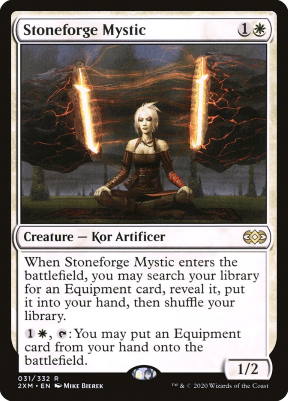
It’s an interesting deck that is a mix between Combo and Aggro. The deck utilizes its companion, Lurrus of the Dream-Den to survive against decks with a lot of removal.
End Step
MTG Modern is an incredibly fun and diverse constructed format. Although the format has undergone many changes in its over ten-year lifespan, it remains arguably the most popular tournament format. Modern exists as a popular Magic Online format while also existing at the LGS level and as the premier format of high-level paper tournaments. No matter your playstyle Modern has the right deck for you.

